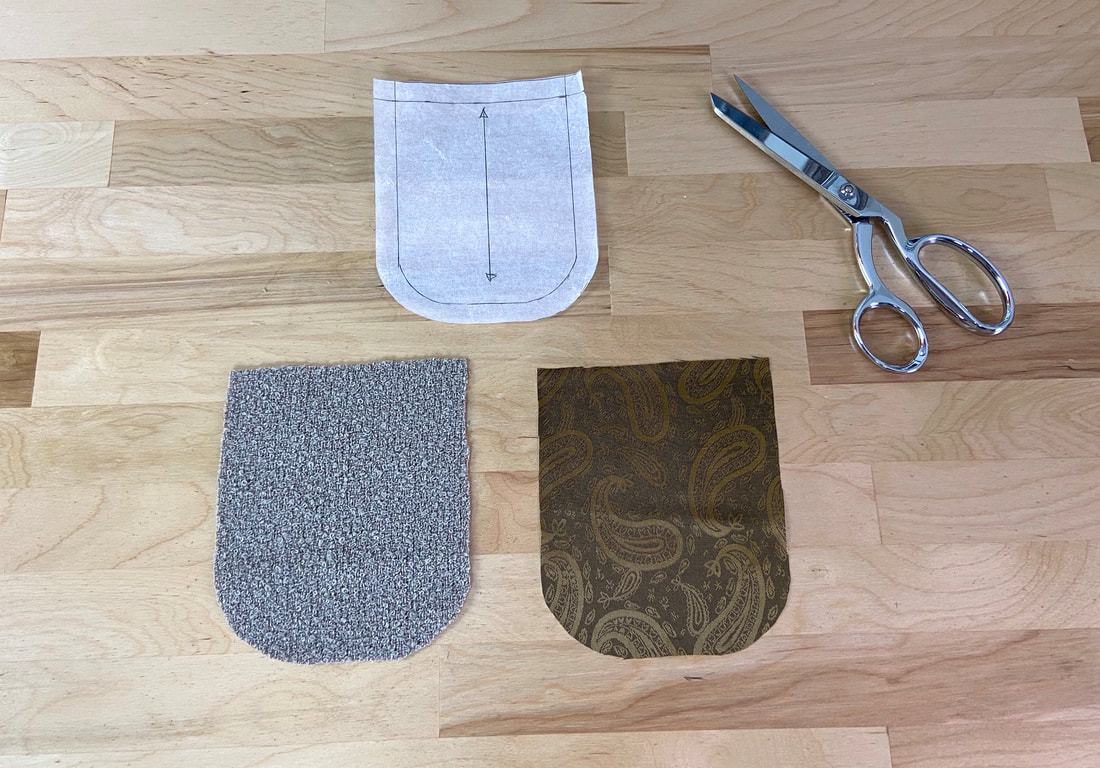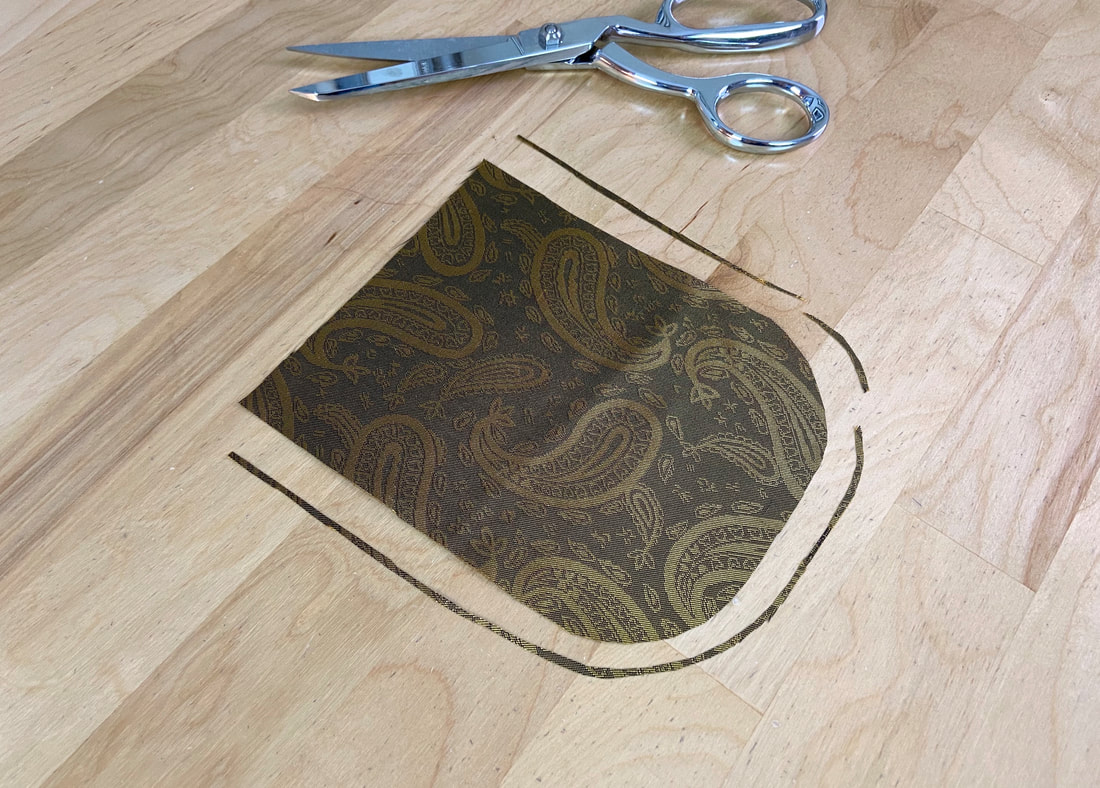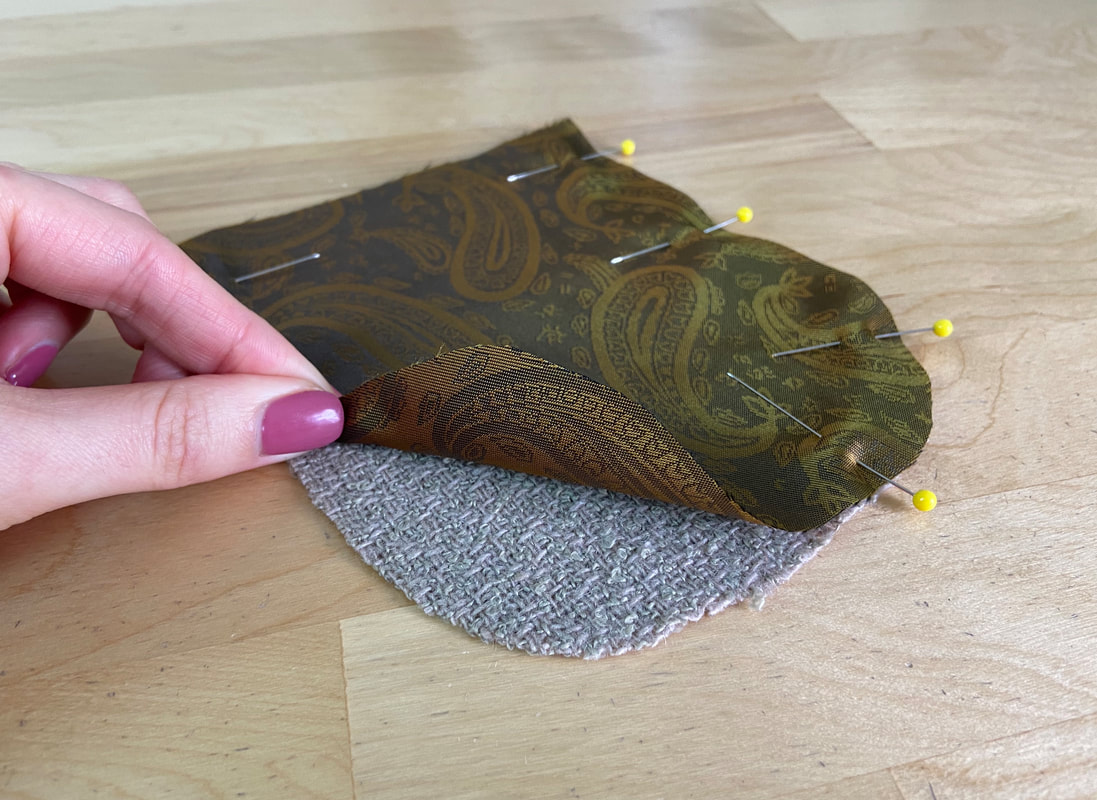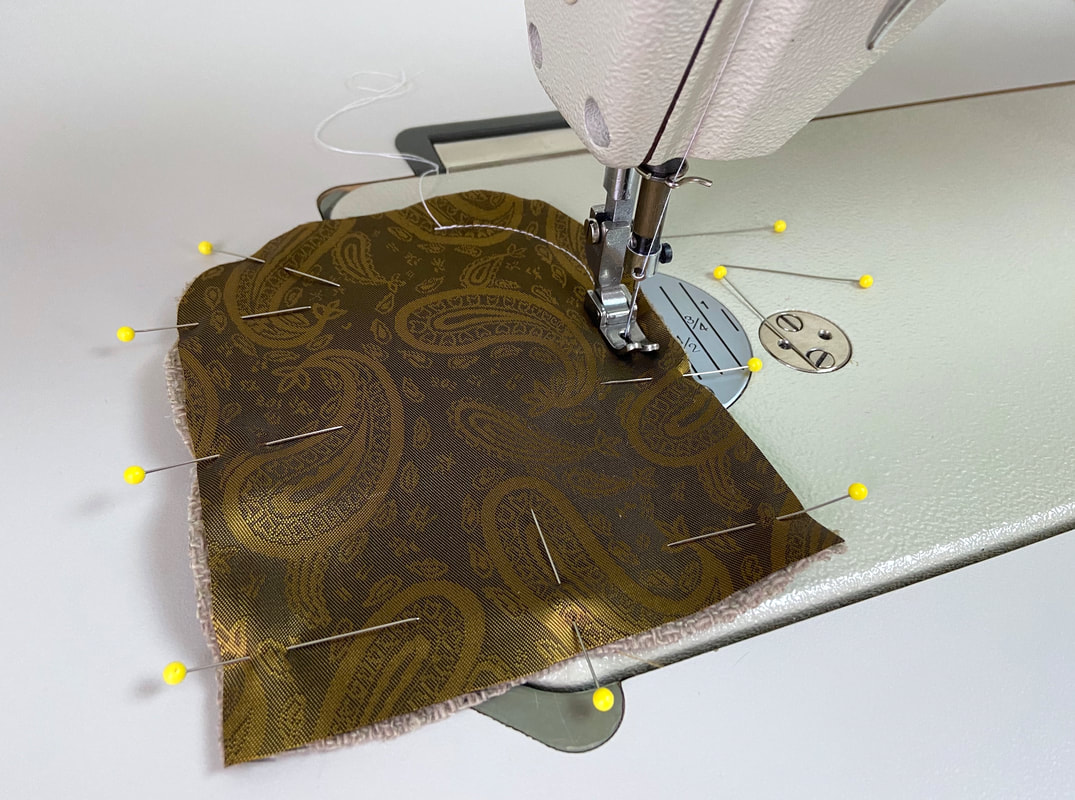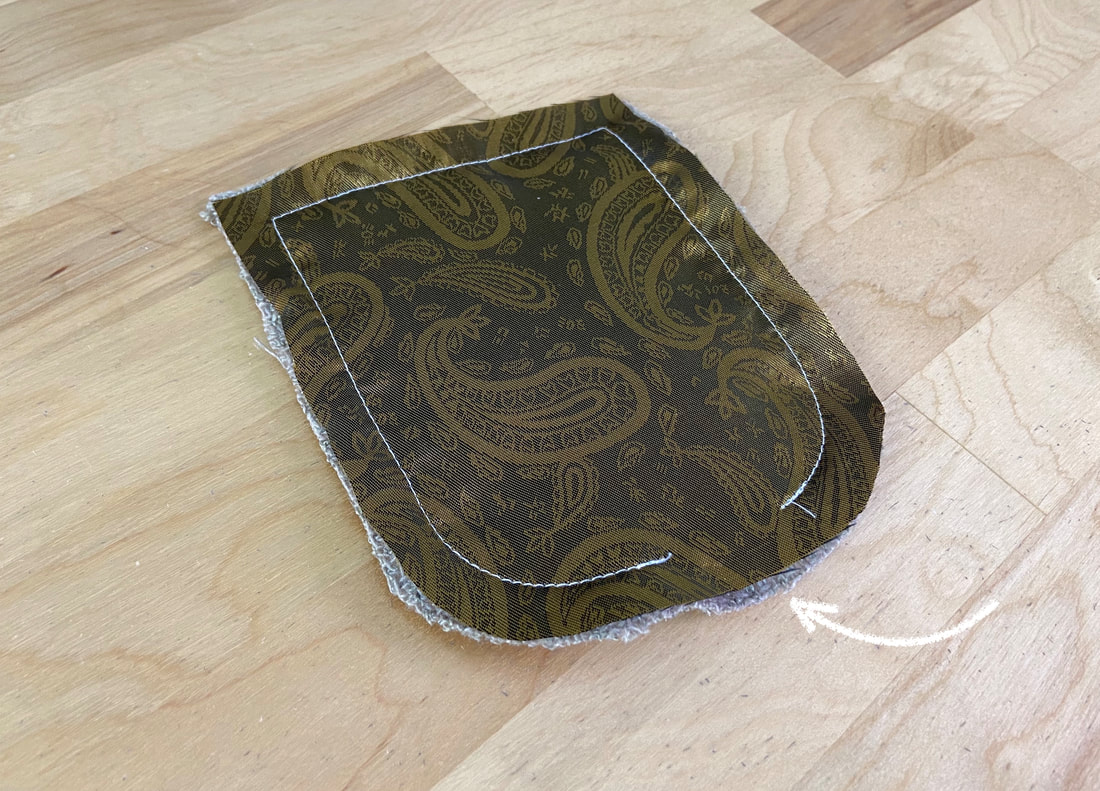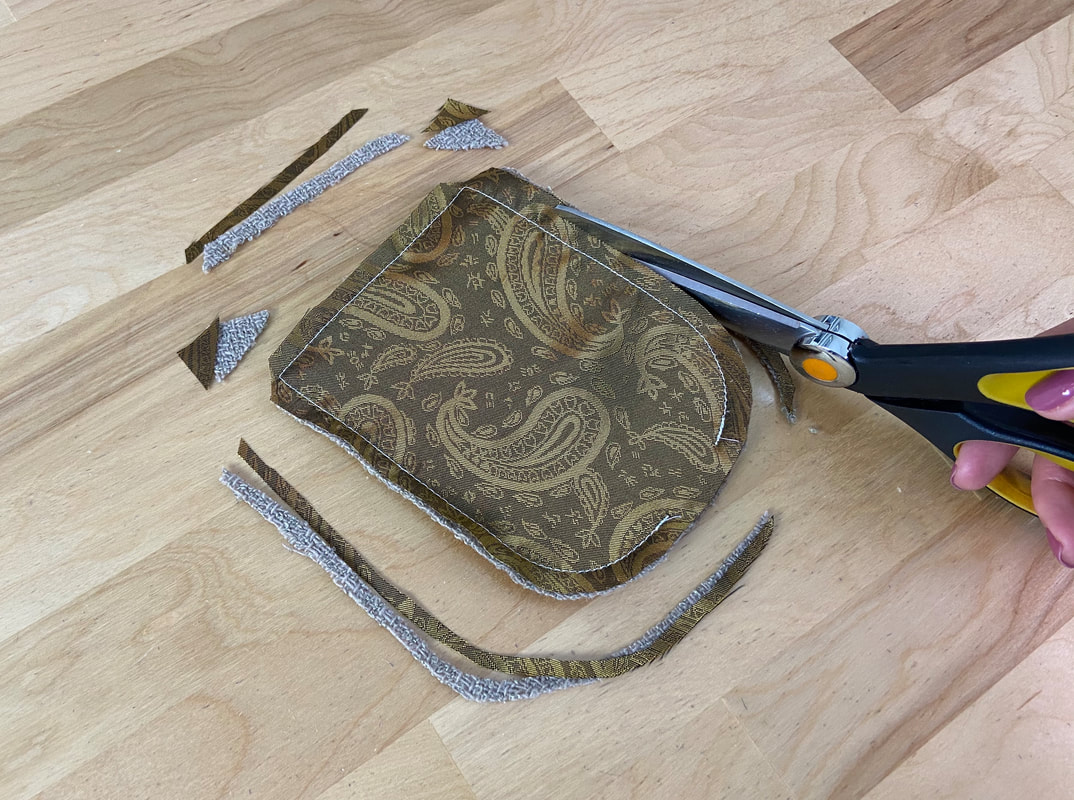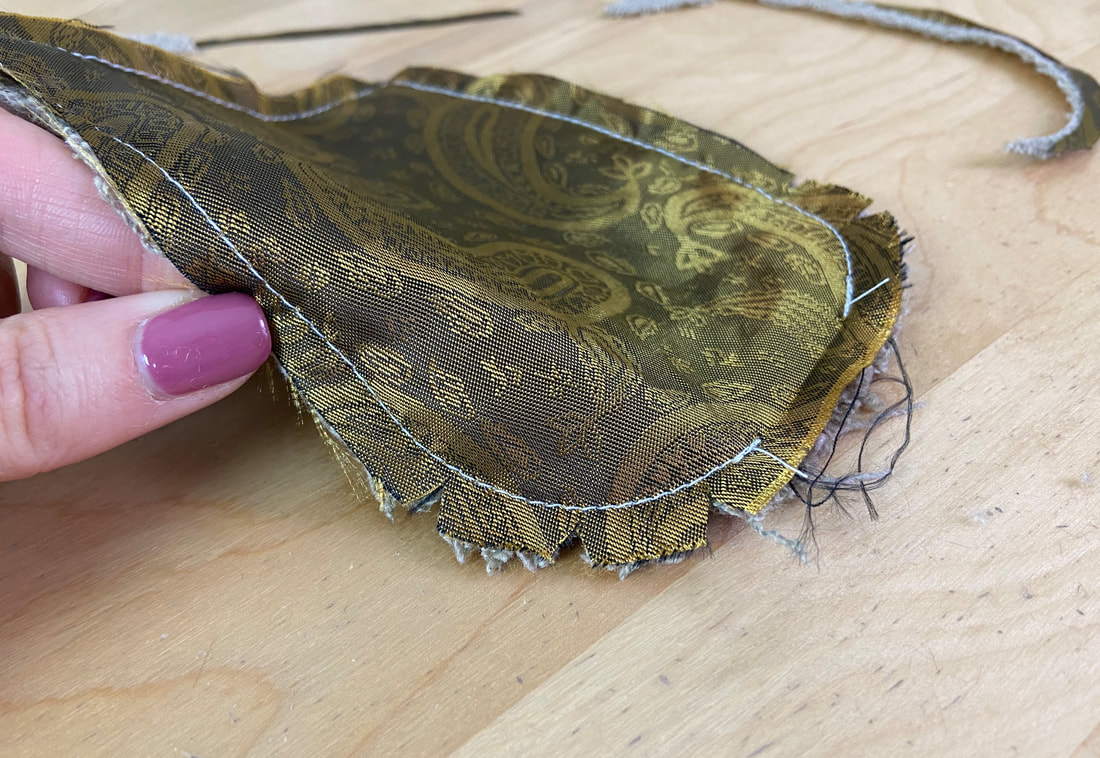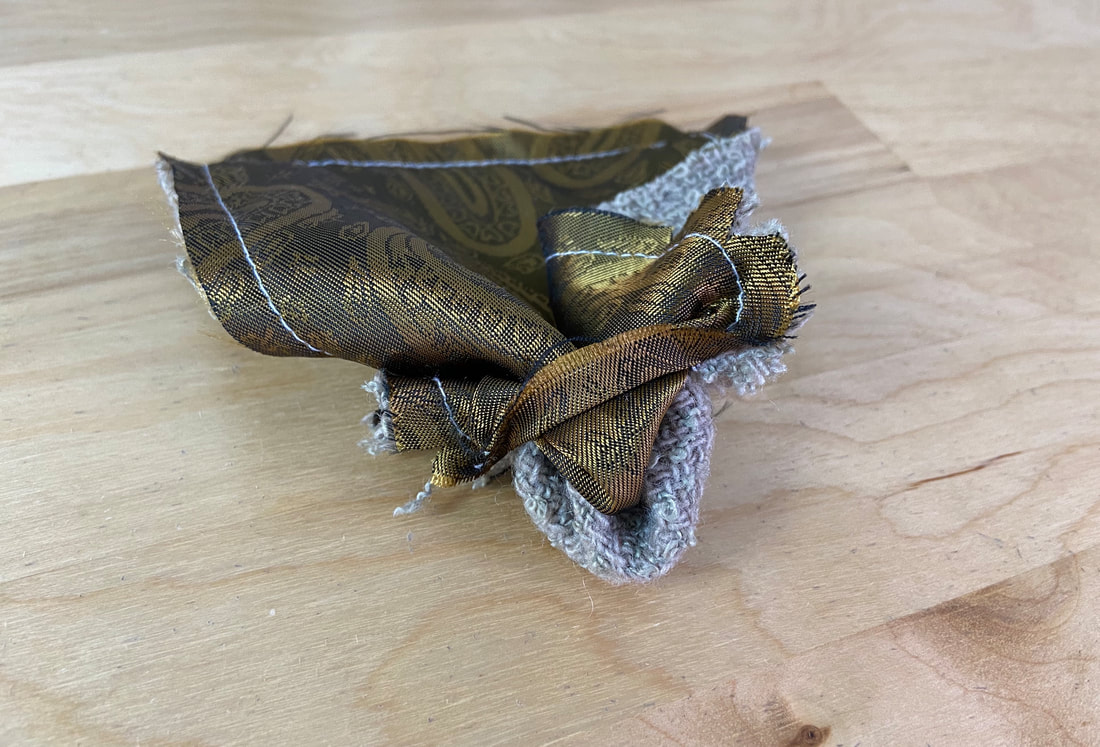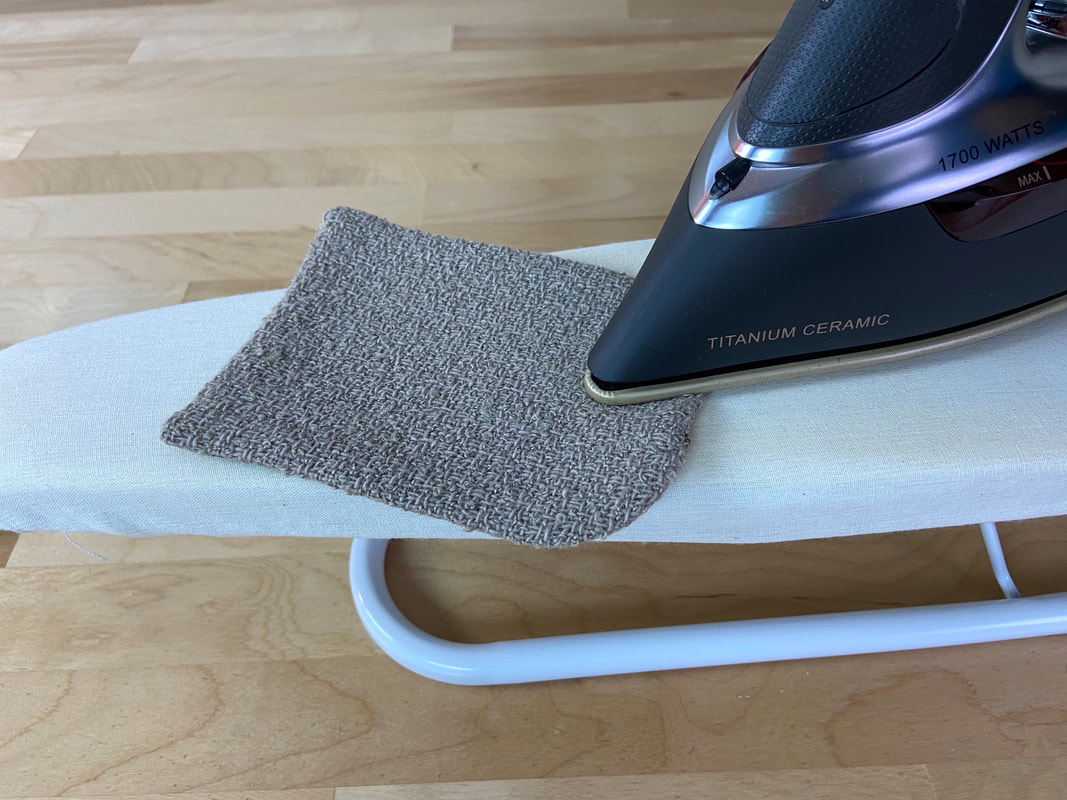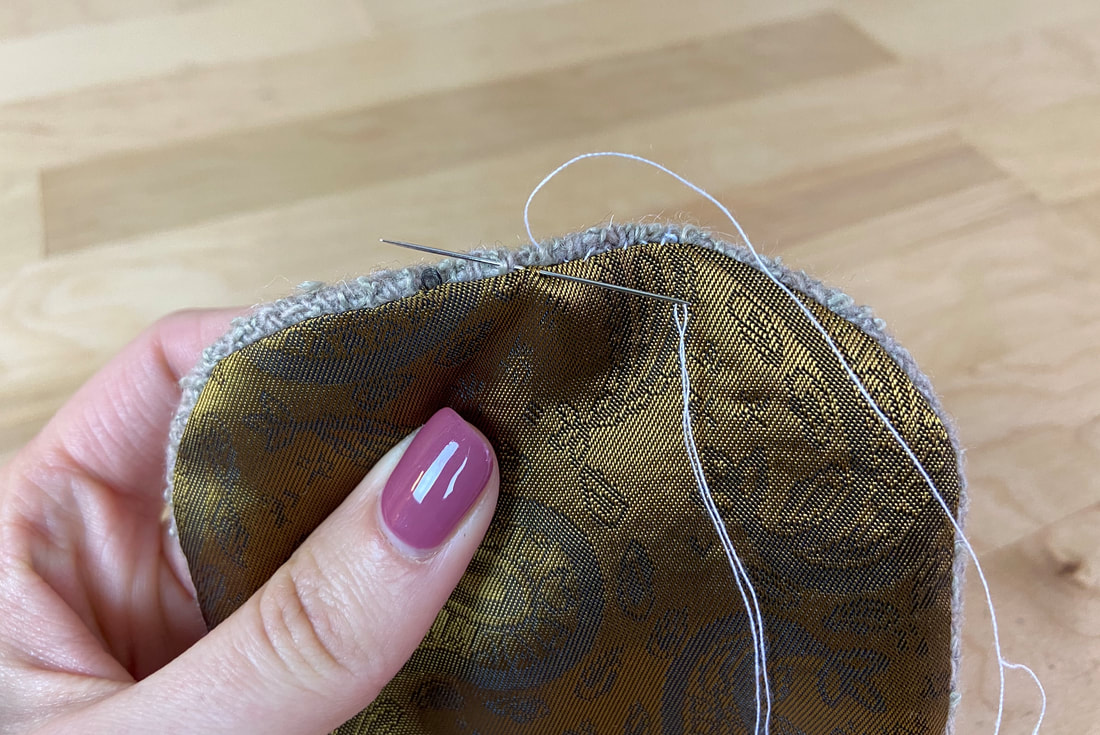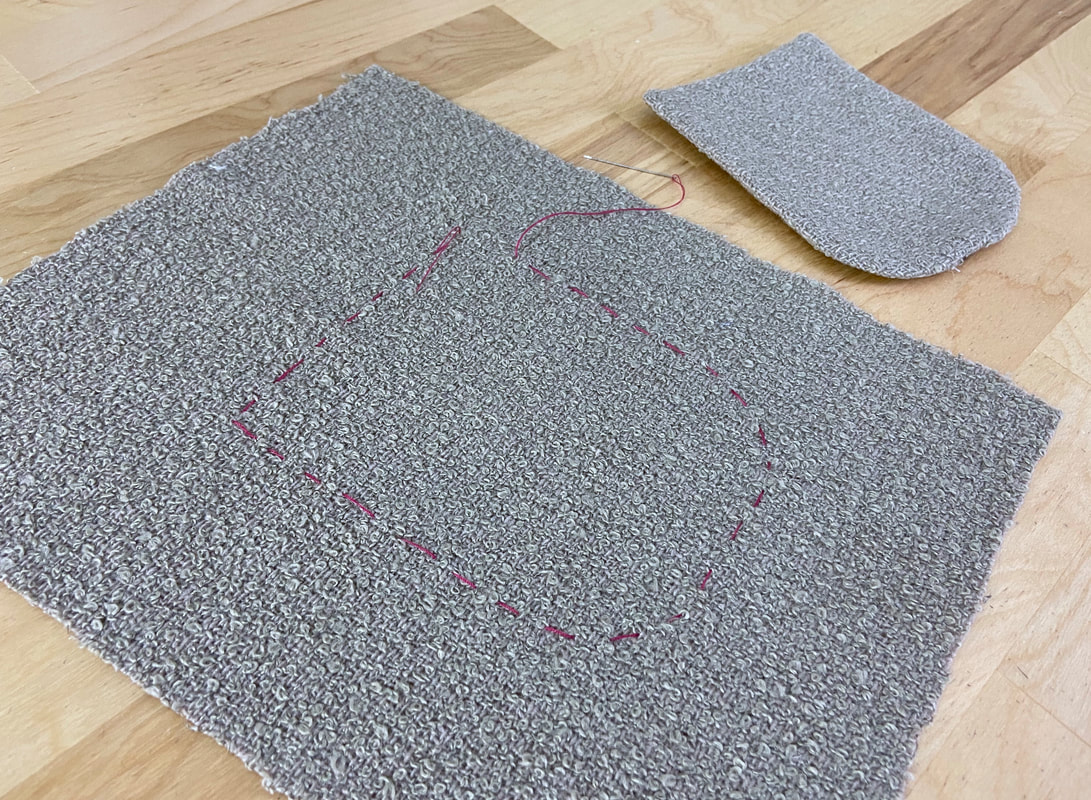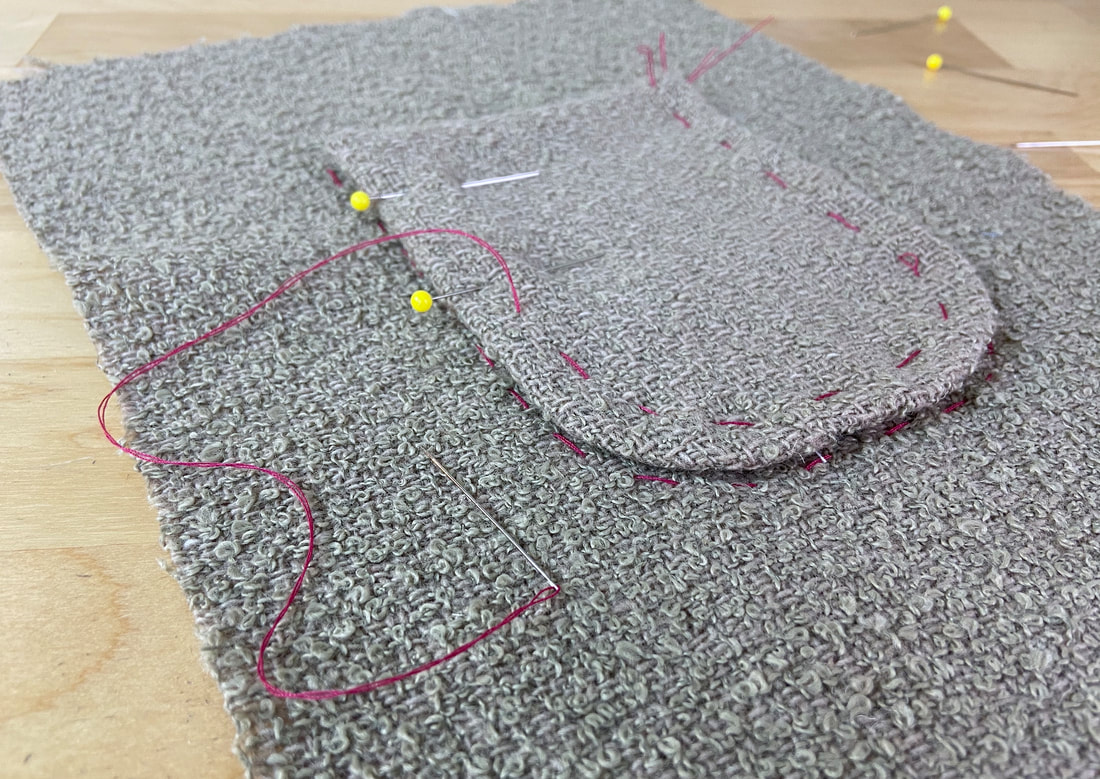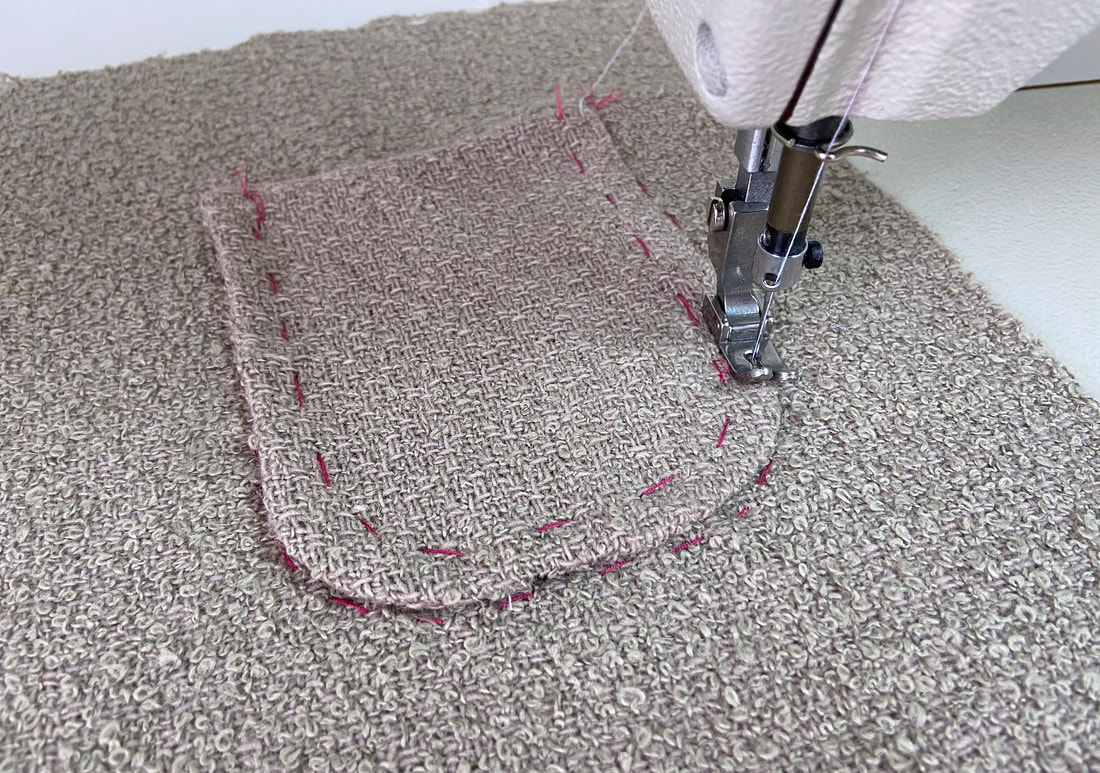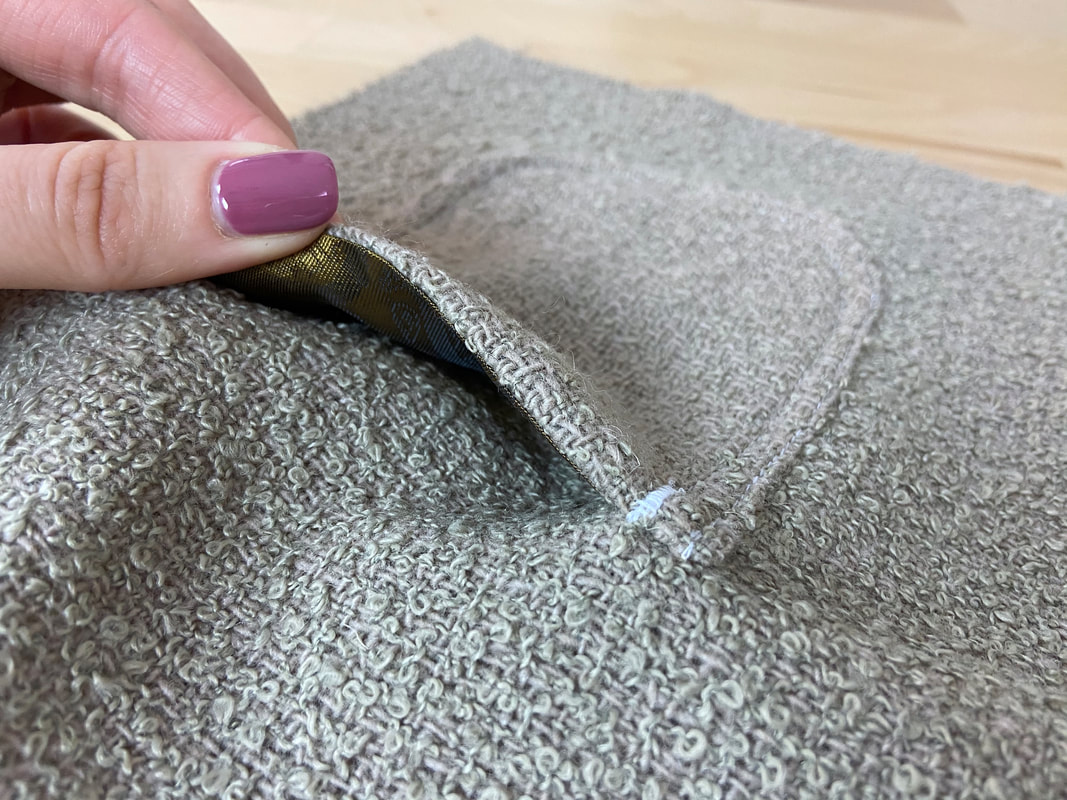Mini Tutorial: How To Sew Curved Lined Patch Pockets Using Separate Lining
A lined patch pocket is a beautifully tailored application that uses an identically shaped lining layer to enclose all the pocket's raw edges. The lining choice is all up to you, whether it is matching or contrasting, as long as it does not add unnecessary thickness and bulk to the final pocket application.
1. Start by cutting two identical pocket pieces: one for the pocket self (the outer pocket layer), and one for the lining.
If you are working with a sewing pattern, cut the two pieces such that their face sides mirror each other (using the same pattern). If you don't have a pattern, mark the pocket lines directly on the fabric and cut the two identical pieces using these marks.
If you are working with a sewing pattern, cut the two pieces such that their face sides mirror each other (using the same pattern). If you don't have a pattern, mark the pocket lines directly on the fabric and cut the two identical pieces using these marks.
2. To ensure that the lining remains enclosed on the wrong side of the pocket in the finished application, trim about 1/16" along all its edges (you'll see why later).
3. Align the lining layer to the pocket self with fabric face sides touching and all edges aligning. Given that the lining was trimmed slightly, you'll find that it may be a bit unnatural to align the edges. You'll have to almost "force them" together - as you do this, don't pay too much attention to the larger pocket bag layer, just do your best to match the corresponding edges.
4. Starting at the bottom-center, stitch along the edges at the designated seam allowance- 1/2" in this case. Continue stitching along all edges, pivoting the stitch at each corner.
Stop at about 1"-1.5" away from the beginning of the stitch. For added comfort in the steps to follow, it helps to backstitch at both beginning and end of this stitch. The open gap will be used to turn the pocket on its face side thus enclosing all raw edges.
Stop at about 1"-1.5" away from the beginning of the stitch. For added comfort in the steps to follow, it helps to backstitch at both beginning and end of this stitch. The open gap will be used to turn the pocket on its face side thus enclosing all raw edges.
5. To minimize bulk and tension, trim the seam allowance down to about 1/4" and cut diagonally at each top corner.
6. If your patch pocket has a curved bottom edge, clip wedge notches along the curved portion. These notches will ensure the finished curved edge is smooth and flat, preventing tension in final pocket application.
7. Turn the pocket on it's right side through the open gap at the bottom.
8. Bring all finished edges out and iron to smooth and flatten them.
9. Close the pocket gap using a hand-applied slipstitch. This slipstitch should connect the two folded edges leaving no visible stitches along the pocket's finished edge.
10. Mark an exact pocket outline at the desired location on the garment. You can use tailor's chalk or a hand basting stitch as shown above- anything that can be easily and safely removed once the pocket is complete.
11. Align the lined pocket bag within the marked lines. Pin or hand baste the pocket to the garment surface underneath. Hand basting is a great tool to use for added security and to ensure that the pocket doesn't shift out of place in the topstitching process.
12. Starting at one of the top opening corners, backstitch, then continue topstitching along the pocket edge until you arrive at the other opening corner. Backstitch again at the end to maintain the pocket opening's durability.
As an extra decorative element, you can add a second row of topstitching next to the initial one (applied in the step above).
To complete the patch pocket application, apply a tack at each pocket opening corner to reinforce these two areas. Since most of the weight falls on the pocket's opening, reinforcing the corners will ensure a durable application throughout the pocket's lifespan. In terms of tacks, you can use a simple hand-applied whipstitch or bar tack as pictured above.
To complete the patch pocket application, apply a tack at each pocket opening corner to reinforce these two areas. Since most of the weight falls on the pocket's opening, reinforcing the corners will ensure a durable application throughout the pocket's lifespan. In terms of tacks, you can use a simple hand-applied whipstitch or bar tack as pictured above.

